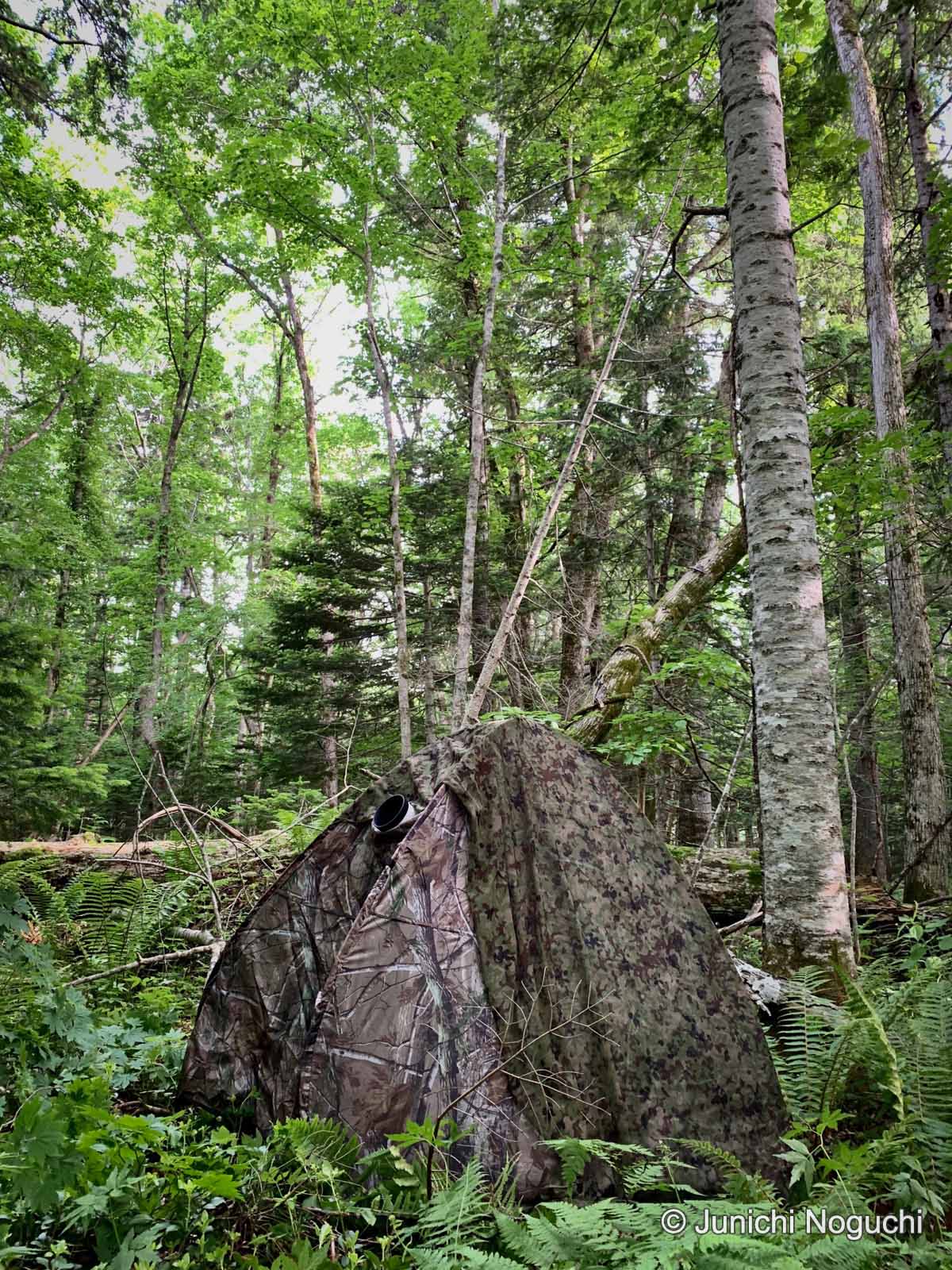A journey to see wild birds in the early summer forest
July 12, 2020 / Hokkaido
Photographer / Junichi Noguchi
When I finally arrived in the north in early summer, I wandered through the forests in search of wild birds. I usually photograph wild animals and birds of prey, but I also love watching the expressions of beautiful small birds and adorable young birds, and I always find the time I spend gazing at them very relaxing.

My partner for shooting is my trustworthy SONY α9Ⅱ and the lens I mainly use is the FE600mm F4 GM OSS. For video shooting, I also brought the FE200-600mmF5.6-6.3 G OSS, which won the Camera Grand Prix 2020 Lens Award. This is also the breeding season for wild birds, so I used a shooting blind to minimize the impact on the subject depending on the situation.
When carrying multiple super telephoto lenses, camera bodies, tripods, and even blinds, I want to reduce the weight of my luggage even a little, so I prioritize small and lightweight items. However, when considering super telephoto shooting and video shooting, I absolutely cannot compromise on the stability and precision of the equipment when set up on a tripod.
The heads I chose without any hesitation were the Markins Q20iQ-BK and BV-HEAD. As the amazing load capacity indicates, they are stable enough to be trusted with the camera even when shooting super telephoto with a 600mm x 2x teleconverter, and they can follow the movements of wild birds that move around in small movements with smooth operation. In addition, the knobs are easy to operate even in a narrow blind, so you won't feel stressed when shooting.
When carrying multiple super telephoto lenses, camera bodies, tripods, and even blinds, I want to reduce the weight of my luggage even a little, so I prioritize small and lightweight items. However, when considering super telephoto shooting and video shooting, I absolutely cannot compromise on the stability and precision of the equipment when set up on a tripod.
The heads I chose without any hesitation were the Markins Q20iQ-BK and BV-HEAD. As the amazing load capacity indicates, they are stable enough to be trusted with the camera even when shooting super telephoto with a 600mm x 2x teleconverter, and they can follow the movements of wild birds that move around in small movements with smooth operation. In addition, the knobs are easy to operate even in a narrow blind, so you won't feel stressed when shooting.

When photographing the Halcyon coromanda, I set up the blinds before dawn and waited inside through the slightly open observation window for the subject to appear. When it finally appeared, I gently moved the lens to keep pace with the Ruddy Kingfisher's repeated small movements. It was quite tricky to keep pace with the bird's small movements in such a small space, but the ease of use and wide range of motion of the Q20iQ-BK & BV-HEAD allowed me to photograph without stress and to fully enjoy my encounter with the rare wild bird.



Also, when photographing Yezo Strix uralensis and Otus semitorques, I find myself constantly moving around in search of a place where I can see the subject's face through the gaps in the leaves.
I move through the forest (sometimes up steep slopes) with my super telephoto lens and camera body set on the tripod head, and capture the moment when the subject passes through the gaps in the swaying leaves. I then move as slowly as possible without making any noise in search of a better position, but moving slowly on uneven ground while carrying a heavy object is a type of training-like movement that puts a strain on the body, so the light weight of the Q20iQ-BK & BV-HEAD helps me here as well.
I feel that the time I spend quietly facing wild birds without being caught up in the presence and operation of the camera and tripod head is truly blissful.
After finishing my photo shoot, I left the forest hoping that the wild birds in the quiet forest would continue to live their lives forever.
I move through the forest (sometimes up steep slopes) with my super telephoto lens and camera body set on the tripod head, and capture the moment when the subject passes through the gaps in the swaying leaves. I then move as slowly as possible without making any noise in search of a better position, but moving slowly on uneven ground while carrying a heavy object is a type of training-like movement that puts a strain on the body, so the light weight of the Q20iQ-BK & BV-HEAD helps me here as well.
I feel that the time I spend quietly facing wild birds without being caught up in the presence and operation of the camera and tripod head is truly blissful.
After finishing my photo shoot, I left the forest hoping that the wild birds in the quiet forest would continue to live their lives forever.

Yezo Strix uralensis juvenile bird
α9Ⅱ / SEL600F40GM & 2X / F8 1/200 s ISO3200 +0.7EV
α9Ⅱ / SEL600F40GM & 2X / F8 1/200 s ISO3200 +0.7EV

Otus semitorques juvenile bird
α9Ⅱ / SEL600F40GM & 1.4X / F5.6 1/1600 s ISO3200 +1.0EV
α9Ⅱ / SEL600F40GM & 1.4X / F5.6 1/1600 s ISO3200 +1.0EV

Junichi Noguchi
Born in Saitama Prefecture in 1968. After gaining experience as a motorcycle and automobile engineer, Felt a strong desire to live in nature and moved to Hokkaido in 2000. Began photographing wild animals in the prefecture. Since then, continued to take photographs around the world with the theme of "the power of life living in nature."
Member of the Japan Professional Photographers Society (JPS)
Member of the Japan Society of Scientific Photography (SSP)
Member of the Japan Society of Scientific Photography (SSP)
URL : www.junsetsusha.com







